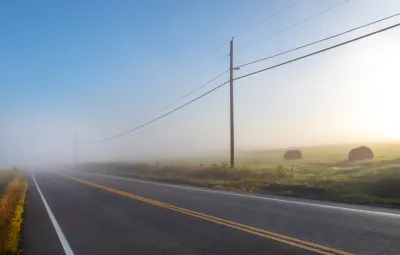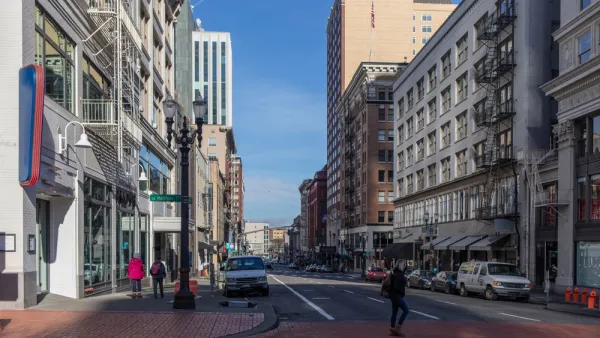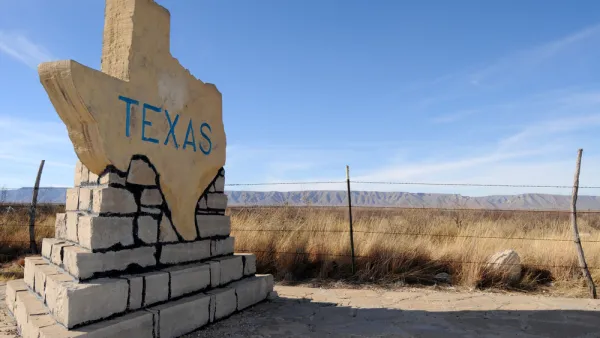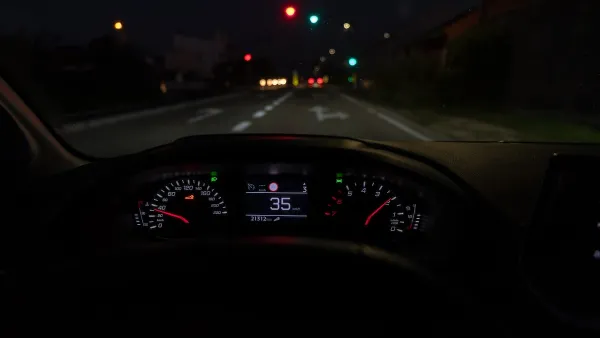A lack of access to public transit, scarcer law enforcement, and reduced access to nearby medical care contribute to more risky behavior and more deadly crashes on rural roads.

“In a 73-page study released last week by the Governor's Highway Safety Association, America’s Rural Roads: Beautiful and Deadly, researchers found that about 48% of U.S. traffic deaths occurred on rural roads from 2016-20 even though only about 19% of the population lives in rural areas.” Ed Blazina, writing in the Pittsburgh Post-Gazette, outlines the study’s findings.
Common causes of crashes are similar to those in urban areas, which continue to grow in most U.S. cities: “distractions, impaired driving, speeding and not wearing seat belts.” But Blazina notes that these tend to occur at higher rates in rural areas.
In 2020, drivers taking a trip the same length were 62% more likely to die if they were in a rural area rather than an urban area, the study said. A total of 85,002 people died on rural roads in the five-year period, nearly half of all traffic deaths across the country.
Blazina continues, “The study cites a number of reasons that lead to drivers exhibiting risky behavior, including open roads, less law enforcement, longer trips for necessities, limited emergency response from farther away and fewer public transit options.”
The article also details the demographics of fatal rural crashes as compared to urban ones. For example, “More drivers and passengers in cars, trucks and vans died in rural areas (68,709 to 56,998) but urban areas led in deaths involving motorcycles (15,390 to 9,310), pedestrians (25,551 to 5,766) and bicycles (3,375 to 952).” Young people between 20 and 24 face a risk of dying on rural roads twice that of urban youth.
According to the study, “Clearly, a holistic approach is needed to address the rural road safety problem — one that includes both behavioral and infrastructure safety.” Among other infrastructure fixes, curve warnings and high-friction surfaces are two “particularly effective” tools for reducing crashes. “The study recommends that states stress the ‘safe system’ approach in rural areas: safe vehicles, safe roads, safe speeds, safe road users and post-crash care.” The report also suggests reducing speed limits, particularly in areas with limited access to medical facilities.
FULL STORY: ‘Beautiful and Deadly’: Rural roads have disproportionate share of traffic deaths

Analysis: Cybertruck Fatality Rate Far Exceeds That of Ford Pinto
The Tesla Cybertruck was recalled seven times last year.

National Parks Layoffs Will Cause Communities to Lose Billions
Thousands of essential park workers were laid off this week, just before the busy spring break season.

Retro-silient?: America’s First “Eco-burb,” The Woodlands Turns 50
A master-planned community north of Houston offers lessons on green infrastructure and resilient design, but falls short of its founder’s lofty affordability and walkability goals.

Test News Post 1
This is a summary

Analysis: Cybertruck Fatality Rate Far Exceeds That of Ford Pinto
The Tesla Cybertruck was recalled seven times last year.

Test News Headline 46
Test for the image on the front page.
Urban Design for Planners 1: Software Tools
This six-course series explores essential urban design concepts using open source software and equips planners with the tools they need to participate fully in the urban design process.
Planning for Universal Design
Learn the tools for implementing Universal Design in planning regulations.
EMC Planning Group, Inc.
Planetizen
Planetizen
Mpact (formerly Rail~Volution)
Great Falls Development Authority, Inc.
HUDs Office of Policy Development and Research
NYU Wagner Graduate School of Public Service




























